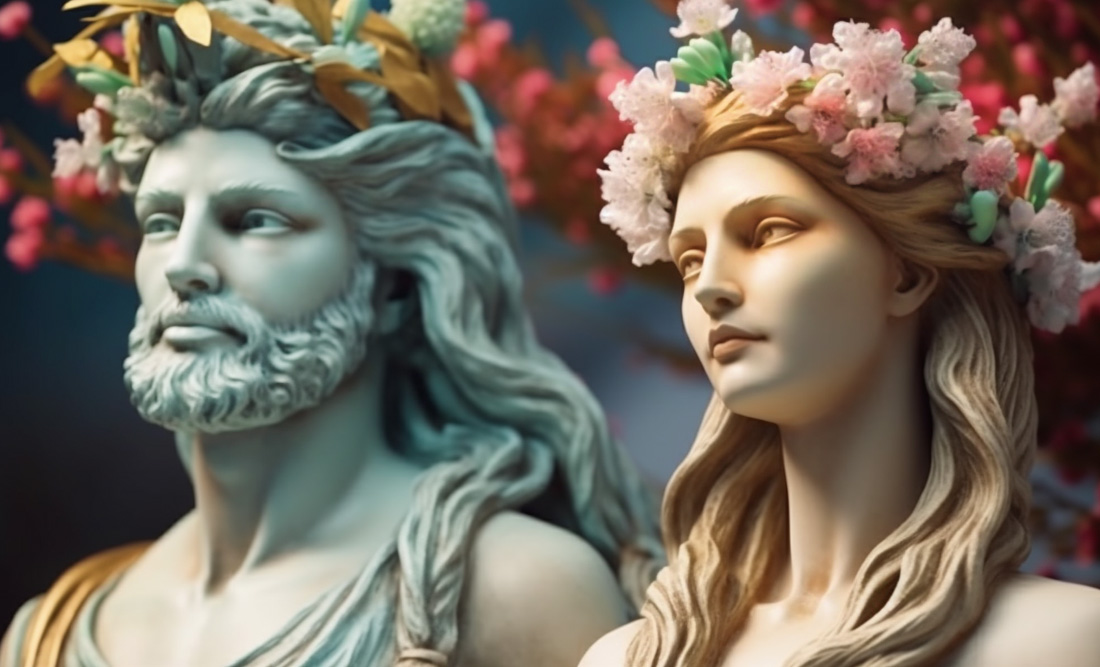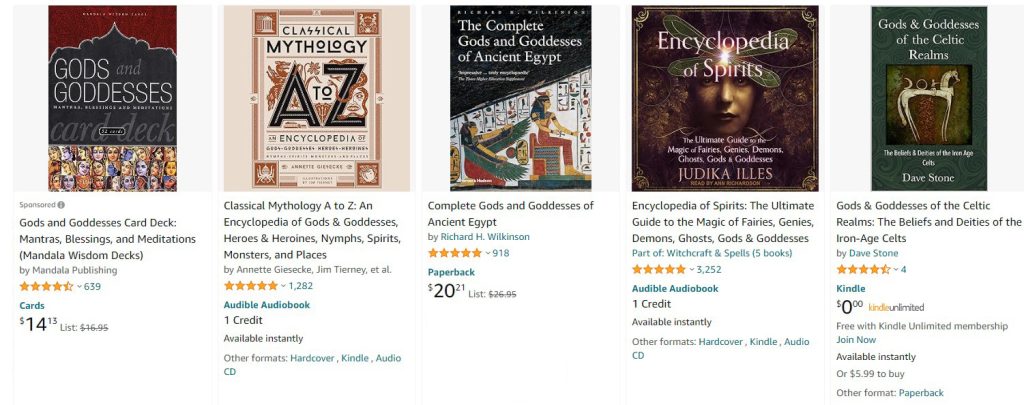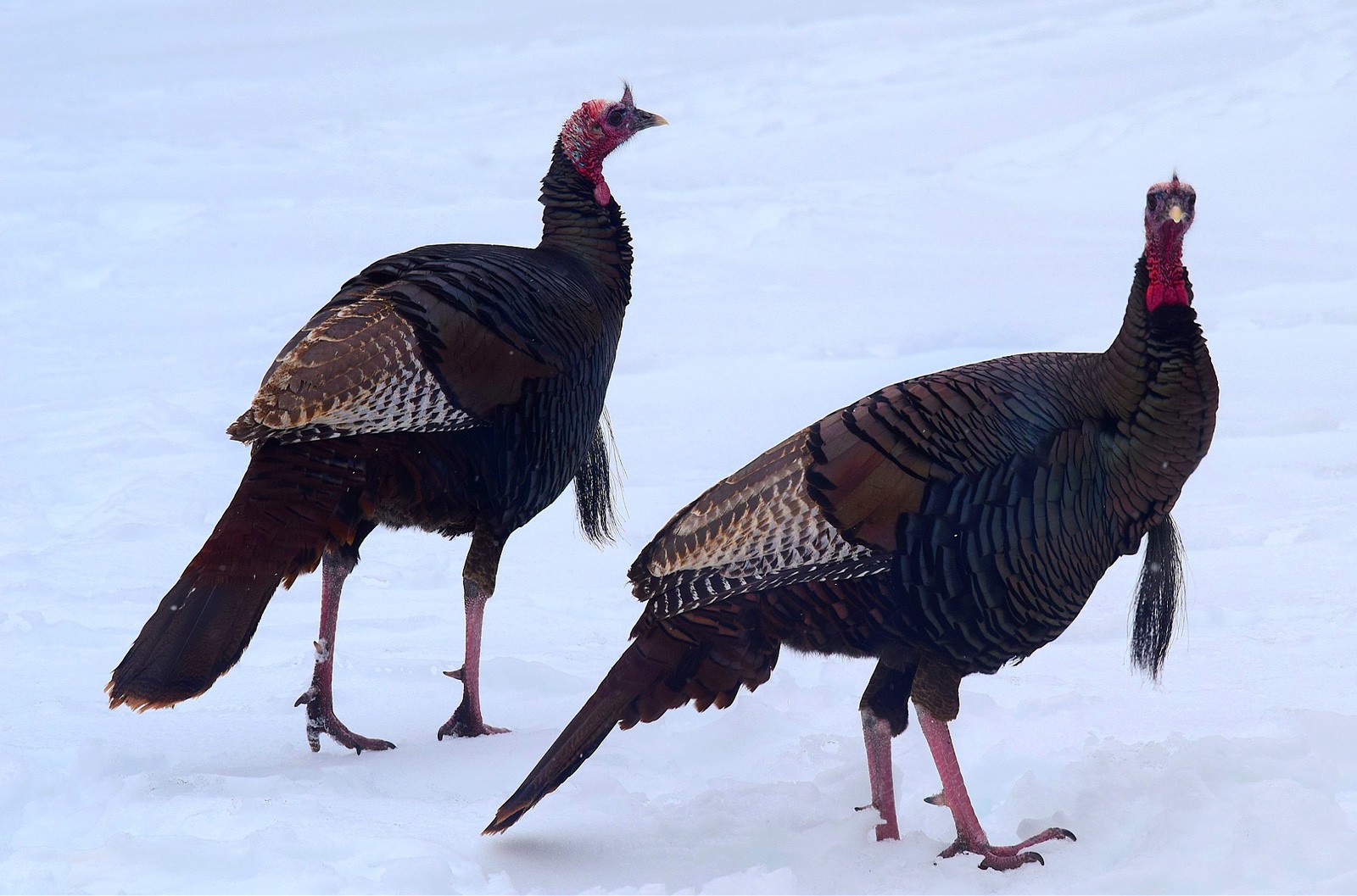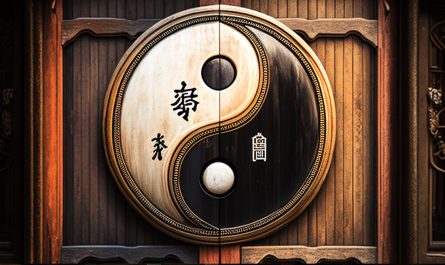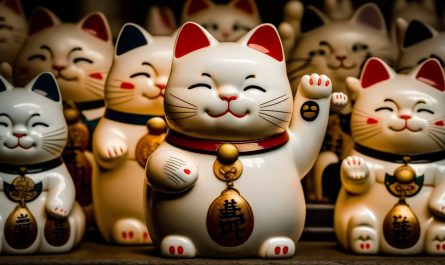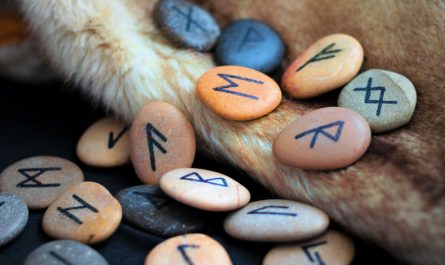Last Updated on May 22, 2025 by Avia
Spring is one of the most important seasons in many cultures and religions, as it is a time of renewal, growth, and fertility. In many mythologies, gods and goddesses of spring play a vital role in the seasonal cycle, symbolizing the rebirth of nature and the beginning of new life. Since these are heavy themes every human experiences, I thought it would be a great idea to share some insights about some of spring’s most well-known gods and goddesses and explore their significance in various cultures and religions.
Table of Contents
Greek Gods and Goddesses of Spring
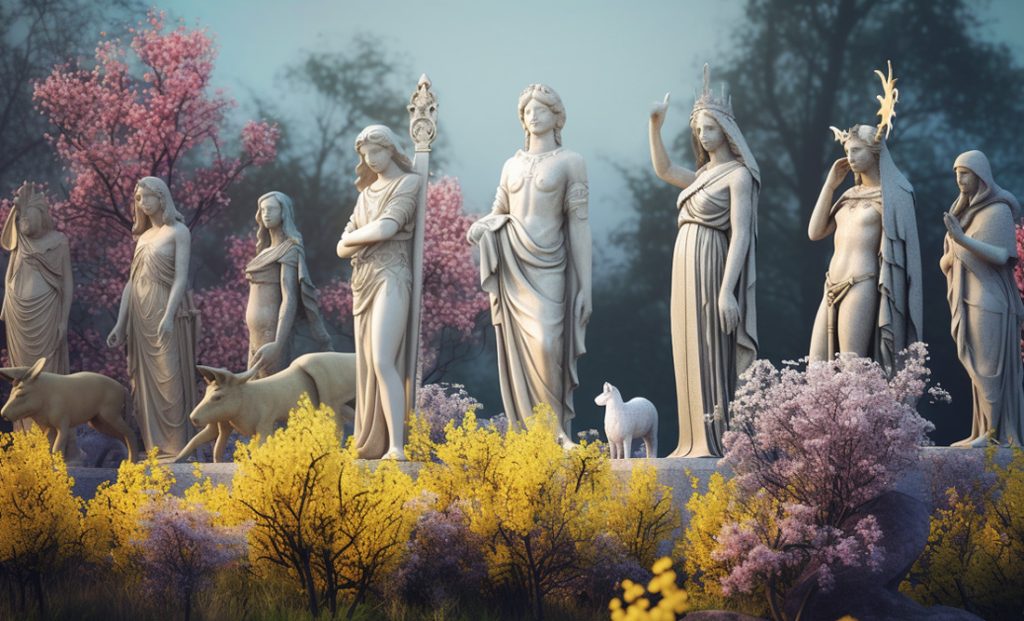
Greek mythology has several gods and goddesses associated with spring. These deities were believed to have control over the natural world and were worshiped by the ancient Greeks for their power and influence. They include:
Dionysus
Dionysus is an important god of spring – the god of wine, fertility, and ecstasy. He was associated with springtime because this was the season when the grape vines began to grow and the wine harvest began. Dionysus was often depicted as a wild and unpredictable god who could bring both pleasure and destruction, depending on his mood.
Chloris
One Greek goddess associated with spring is Chloris, the goddess of flowers. She was said to have been responsible for creating the colorful flowers that bloom in the springtime, and was often depicted carrying a wreath of flowers or surrounded by flowers. She was also believed to have been responsible for the growth of vegetation and the renewal of the natural world after the cold, dark winter months
Persephone
Persephone is a goddess who was originally associated with spring and fertility. She was the daughter of Zeus, the king of the gods, and Demeter, the goddess of agriculture and harvest. She is associated with spring because she ascends from the underworld every spring, bringing vernal birds, flowers, and abundance as she emerges.
Apollos and Artemis
There were also other gods that were associated with spring in Greek. For example, Apollo and Artemis. Apollo is the god of music, poetry, and prophecy and was associated with the arts and creativity that often bloom in the springtime.
Artemis, the goddess of the hunt, was also associated with spring, as it was a time of year when hunting and gathering were important for survival.
Roman Gods and Goddesses of Spring
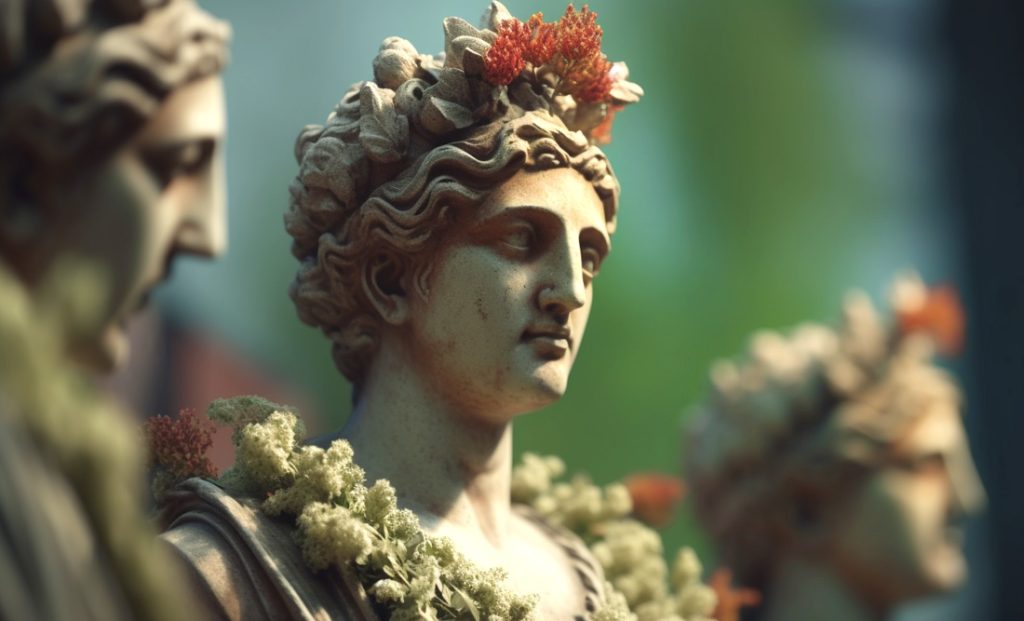
In ancient Roman religion, the gods and goddesses of spring played an important role in the seasonal cycle and the agricultural calendar. These deities were associated with fertility, growth, and renewal, and their worship was closely linked to the agricultural practices of the time. They include:
Flora
One of the most prominent Roman deities of spring was Flora, the goddess of flowers and the blooming of plants. Her festival, the Floralia, was celebrated from April 28th to May 3rd and featured theatrical performances, dancing, and other forms of revelry. The festival was a time to celebrate the natural world’s beauty and ask for Flora’s blessings in the coming growing season.
Mars
Another important deity of spring was Mars, the god of war and agriculture. Although he was primarily associated with warfare, Mars was also seen as a protector of crops and the agricultural cycle. His festival, the Mars Ultor, commemorates bounty in agricultural endeavors and a successful growing season.
Other Gods and Goddesses
In addition to these primary deities, there were a number of other gods and goddesses of spring and the natural world. These included the goddess Gaia, who was associated with growth and the renewal of the natural world, and the god Liber, who was seen as a patron of agriculture and the vine.
Norse Gods and Goddesses of Spring
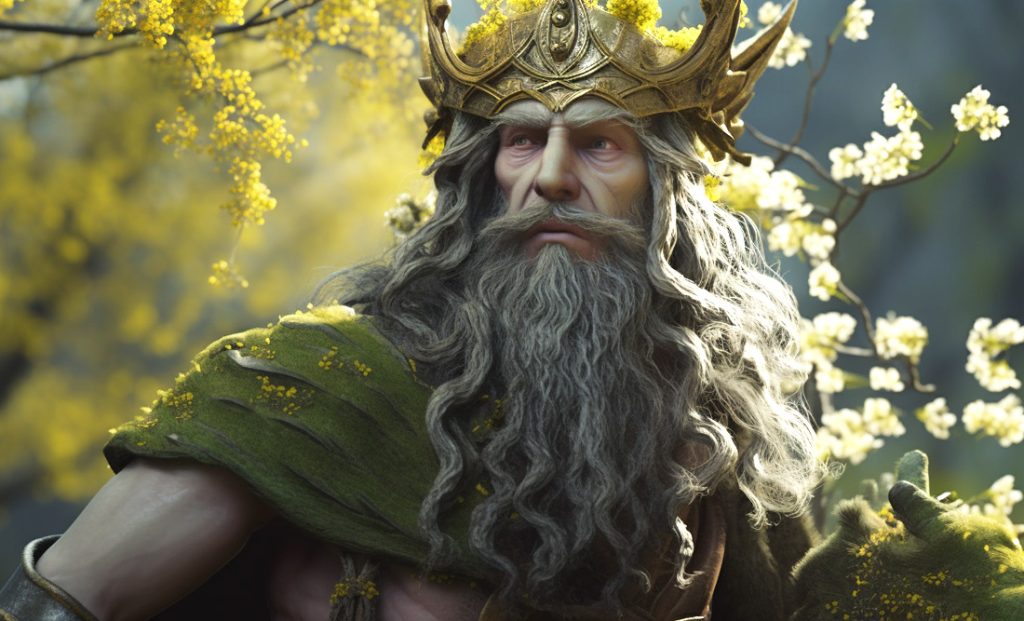
In Norse mythology, the arrival of spring was celebrated as a time of rebirth and renewal. The Norse pantheon of gods and goddesses had their own unique roles in the spring season.
Eostre
The most important goddess of spring is Eostre, the goddess of fertility, rebirth, and dawn. Sometimes referred to as the goddess Ostara, this deity was associated with springtime because this was the season when the days began to lengthen and the sun became stronger. She was also associated with the hare and the egg, which were symbols of fertility and new life.
Freyr
Freyr is also an important god of spring in Norse mythology. He was referred to as the god of fertility, prosperity, and peace. Freyr was associated with springtime because this was the season when the crops began to grow, and the animals began to mate. He was also associated with the renewal of life and the regeneration of the earth, which made him an important figure in springtime celebrations.
Idun
Idun is the goddess of youth, renewal, and fertility. She is associated with the magic apples that keep the gods young and healthy. In Norse mythology, she was responsible for maintaining the eternal youth and beauty of the gods, and her apples were an important source of renewal and vitality.
Lofn
She is a goddess of spring associated with love and fertility. Lofn is said to have the power to smooth over disagreements between lovers, making her a powerful force for reconciliation and harmony. She is also associated with marriage and the union of two people in love.
Egyptian Gods and Goddesses of Spring
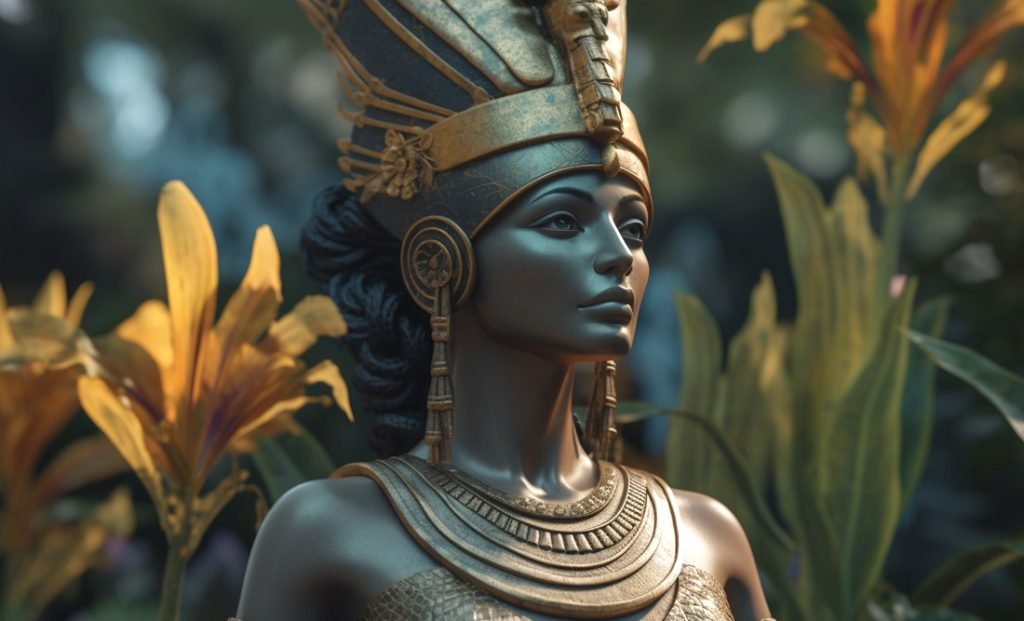
In ancient Egyptian mythology, several gods and goddesses were associated with the spring season. These deities were often depicted with symbols and attributes related to growth, renewal, and fertility. They include:
Osiris
Osiris is referred to as the god of fertility, agriculture, and the afterlife. He was associated with springtime because this was the season when the Nile River flooded, bringing water and nutrients to the crops. He was also associated with the cycle of life, death, and rebirth, which made him an important figure in springtime celebrations. His death and resurrection were celebrated during the Osiris festivals, which marked the beginning of the agricultural year.
Isis
Isis was the wife of Osiris and the goddess of motherhood, fertility, and rebirth. She was often depicted holding a cornucopia or a sheaf of wheat, which represented the abundance and fertility of the spring season.
Horus
Horus was the son of Osiris and Isis and was considered to be the god of the sky and of kingship. He was often depicted with the head of a falcon and was associated with the rising sun and the spring season.
Hathor
Hathor, the goddess of fertility, love, and joy. She was associated with springtime because this was the season when the cows would give birth, and the crops would begin to grow. Hathorwas also associated with music, dance, and celebration, which made her an important figure in springtime festivals.
Min
Min is referred to as the god of fertility and was often depicted with an erect phallus, symbolizing his association with procreation and the renewal of life in the spring.
Tefnut
She is the Egyptian goddess of moisture and rain. She was often depicted with a lion’s head and was associated with the storms and floods that occurred during the spring, which were essential for crops’ growth and life’s renewal.
Chinese Gods & Goddesses of Spring
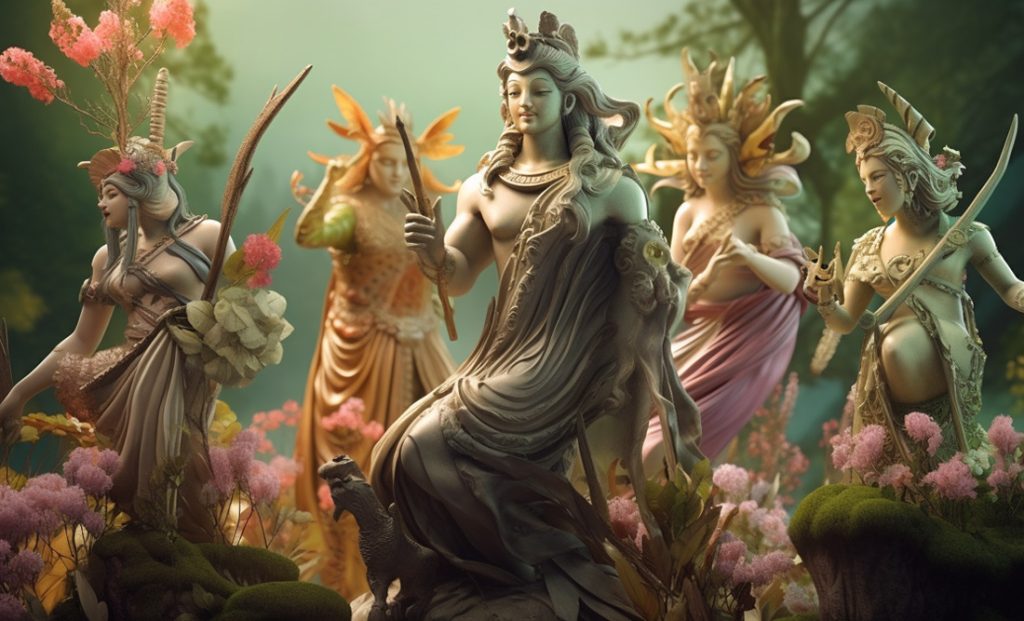
In Chinese mythology, there are several gods and goddesses that are associated with the spring season and they include:
Cai Shen
One of the most prominent Chinese spring gods is Cai Shen, the god of wealth and prosperity. He is often depicted wearing a red robe and holding a gold ingot, and he is believed to bring good fortune and abundance to those who honor him. During the Chinese spring festivals, many people will place images or statues of Cai Shen in their homes or businesses to invite his blessings for the coming year.
Chun-Ti
This is a Chinese god of springtime and agriculture. He was associated with springtime because this was when the farmers began to plant their crops. Chun-Ti was also associated with the renewal of life and the regeneration of the earth, which made him an important figure in springtime celebrations.
He Xiangu
This is another goddess who is often depicted holding a lotus flower. She was a mortal woman who achieved immortality by living a life of extreme virtue and devotion to the Tao. She is said to have the power to heal and rejuvenate, and is sometimes invoked during the spring season as a symbol of renewal and new beginnings.
Xi Wangmu
She was the Chinese queen mother of the West. Xi Wangmu was associated with springtime because this was the season when the cherry blossoms and peach trees would blossom, and she was believed to live in a garden of peach trees on a mystical mountain.
She was also associated with immortality and longevity, which made her an important figure in springtime festivals.
There are also several other Chinese gods and goddesses associated with the spring season. These include:
- Zao Jun, the god of the kitchen who is believed to protect the home and ensure a bountiful harvest
- Guan Yin, the goddess of mercy who is often associated with the blooming of flowers and the renewal of life
- Wen Chang, the god of literature and learning who is honored during the spring festival as a symbol of intellectual growth and development.
Conclusion
The gods and goddesses of spring play an important role in many cultures and religions. They symbolize the rebirth of nature on the land and the beginning of new life. These deities remind us of the importance of the seasonal cycle and the cycles of life, death, and rejuvenation. By honoring these gods and goddesses, we celebrate our connection to the beauty and abundance of nature. As always, thanks for reading!
Mighty brightly,

© Copyrighted. All Rights Reserved.

